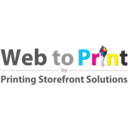Within today's digital age, the printing industry is experiencing a shift as businesses look for innovative solutions to bridge the divide between online and traditional operations. Web-to-print applications has emerged as a robust tool that optimizes the printing process, allowing it simpler for print shops and businesses to manage orders, customize products, and enhance customer satisfaction. By leveraging this technology, companies can not just increase their efficiency but also adjust to the growing demand for personalized and on-demand printing services.
This detailed guide will delve into the world of web-to-print software, addressing key aspects such as its advantages, characteristics, and the distinctions between traditional printing and modern web-to-print services. Whether you are a print shop owner wanting to elevate your business or a decision-maker trying to understand how web-to-print can align with your e-commerce strategy, this article will provide valuable insights into the development of printing in the digital marketplace. Join us as we investigate how web-to-print technologies are revolutionizing the print industry and paving the way for a more integrated future.
Comprehending Online Printing Solutions
Online printing software represents a online solution that empowers organizations as well as printing companies to control the print process through an online system. https://posteezy.com/unlocking-creativity-top-features-web-print-solutions allows clients to create, edit, and order printed materials straight from a webpage, resulting in the process smooth and easy to navigate. With the boom of digital commerce, web-to-print solutions have become essential for print shops aiming to widen their clientele and streamline efficiency.
A primary benefits of web-to-print software lies in its power to facilitate personalization and adaptation of print products. Customers can easily submit their designs, pick particular formats, and include distinct elements to their requests, all from the comfort of their private residences. This degree of engagement empowers customers, resulting in increased satisfaction and loyalty, as they feel engaged in the production process.
Additionally, web-to-print software improves order management and workflow productivity. Legacy print processes typically involves manual processes that can lead to mistakes and slowdowns. Conversely, Web2Print solutions simplify many of these tasks, ranging from receiving orders to printing and delivery. This mechanization not only lowers the possibility of mistakes but also allows printing facilities to handle a higher volume of purchases faster, finally resulting in reduced costs and greater general output.
Advantages and Characteristics of Web-to-Print Solutions Services
Web-to-print services offer numerous benefits that can significantly enhance the effectiveness and performance of printing businesses. One of the main advantages is streamlined transaction management. These services allow clients to submit requests directly online, minimizing the chance of errors that can occur with conventional methods. By automating the order process, businesses can concentrate on outputs and delivery, rather than the challenges of manual data entry and interaction.
An additional key feature of web-to-print solutions is personalization and customization capabilities. Clients today demand custom products and experiences, and web-to-print platforms empowers them to easily create and modify their print requests. Features such as data-driven printing enable businesses to offer custom marketing materials or custom branding solutions, catering to the unique needs of each client while boosting customer contentment and loyalty.

Additionally, web-to-print services are designed with flexibility in focus. As businesses expand, these platforms can evolve by combining with e-commerce and utilizing cloud technologies. This scalability not only allows for the expansion of offerings but also supports companies in reducing waste and expenses through efficient workflow management. With powerful features and the ability to adapt to industry trends, web-to-print software positions printing shops for sustainable growth in a challenging landscape.
Future Trends and Developments of Web-to-Print
As we look toward the prospects of web-to-print technology, one of major significant trends is the growing involvement of artificial intelligence and ML. Such advancements are enhancing personalization capabilities, enabling print shops to offer more tailored solutions to clients. By examining customer data and behaviors, AI can recommend products, streamline design processes, and improve pricing strategies, which will ultimately help businesses create even relevant offerings that resonate with consumers.
A further trend is the move toward sustainability. With increasing environmental concerns, businesses are seeking eco-friendly printing options that reduce waste and cut down on energy consumption. Web-to-print software is evolving to support sustainable practices, such as using reusable materials and optimizing print runs to decrease excess output. helpful hints to environmentally conscious buyers but also positions print shops as innovative and responsible entities in an ever more competitive market.
In conclusion, the rise of online commerce continues to shape the future of web-to-print. As more companies move online, merging web-to-print systems with e-commerce platforms becomes essential. This integration enables smooth order management, monitoring, and fulfillment, improving the complete customer experience. Print businesses that successfully combine their services with e-commerce capabilities will likely see increased sales and enhanced customer loyalty, harnessing the complete potential of digital transformation in the print sector.
